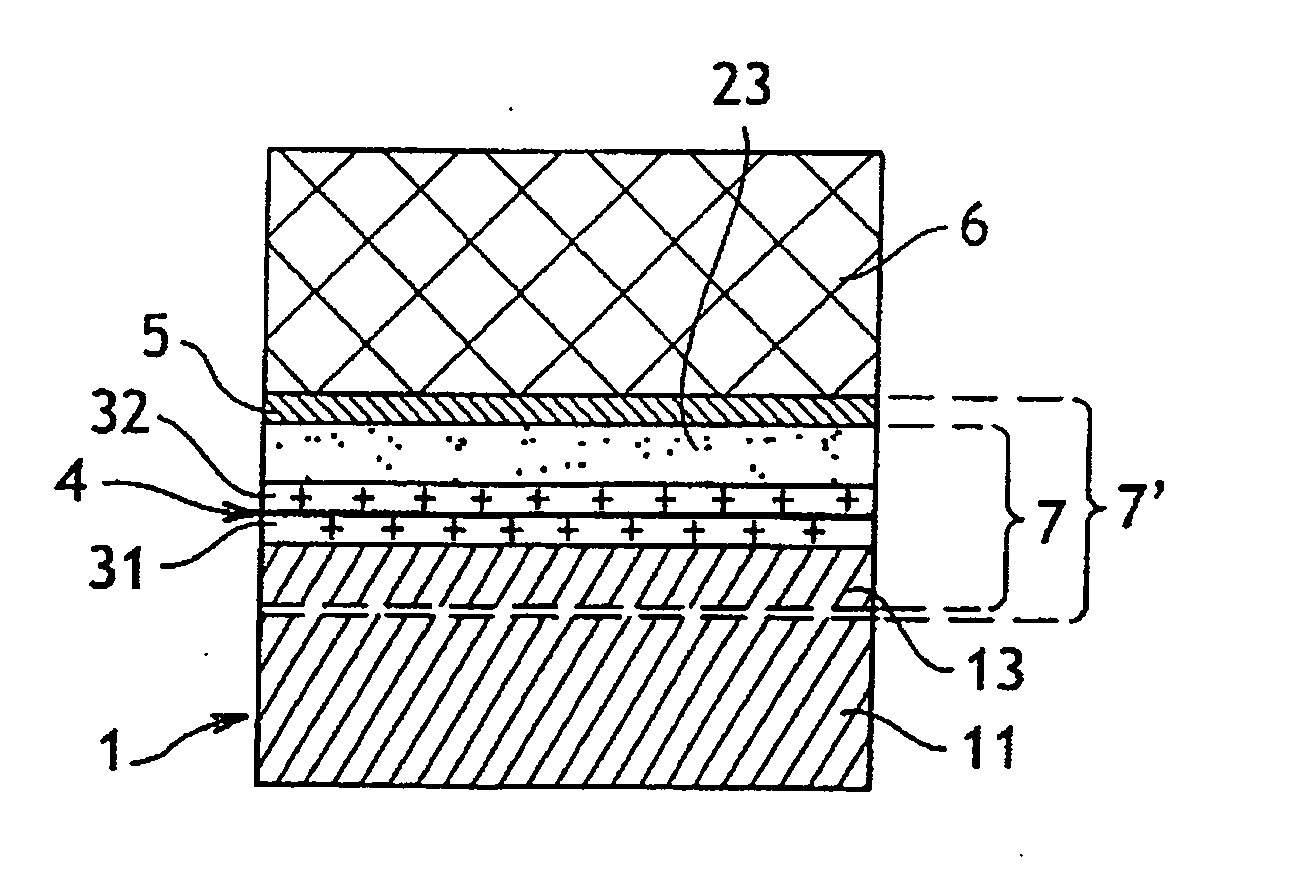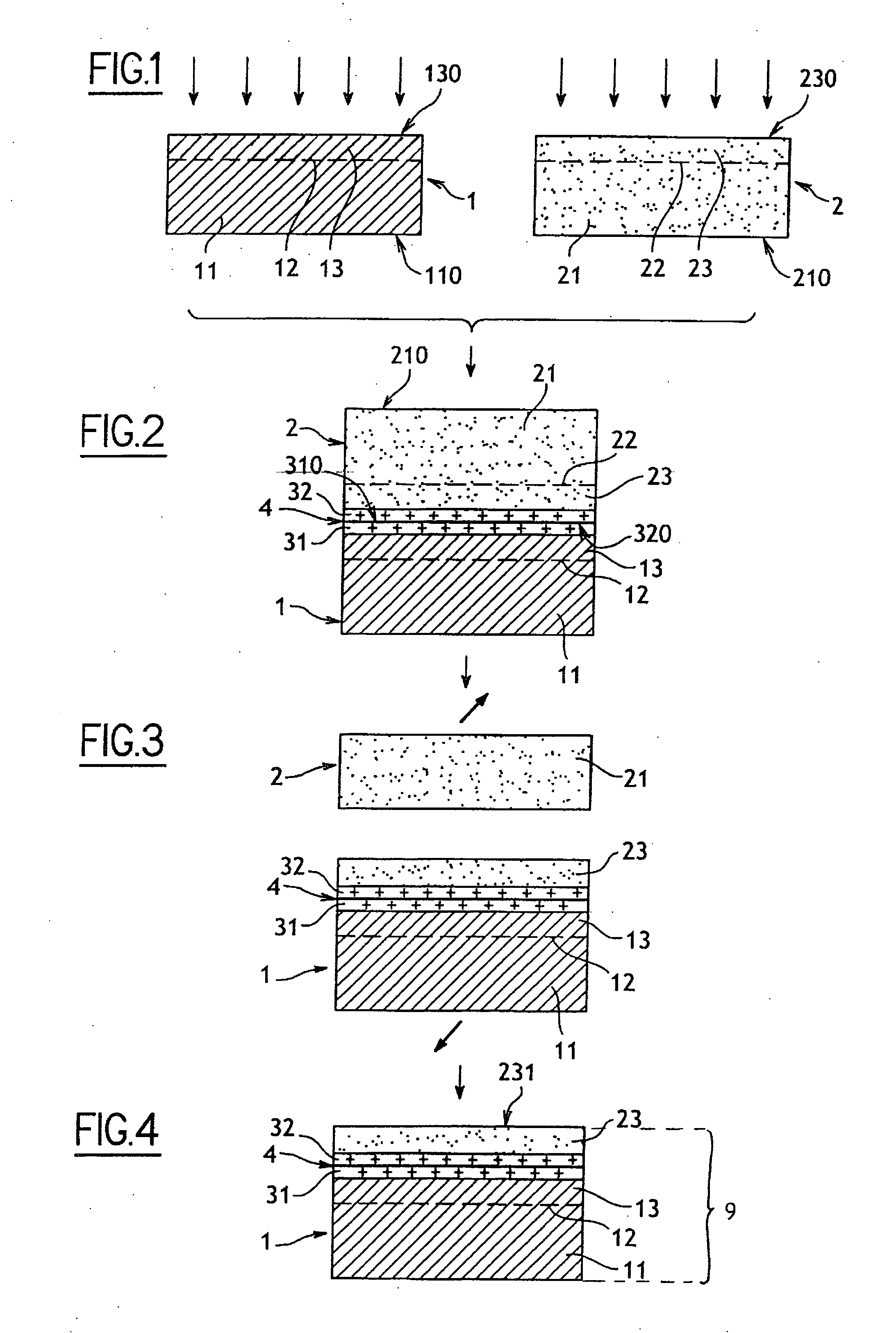Method of fabricating an epitaxially grown layer
a technology of epitaxial growth and epitaxial growth, which is applied in the direction of polycrystalline material growth, crystal growth process, after-treatment details, etc., can solve the problems of not being able to fabricate substrates from gallium nitride (gan) ingots on an industrial scale, and existing methods are not suitable for fabricating gallium nitride (gan) ingots. , to achieve the effect of reducing the thickness of the bonded nucleation substra
- Summary
- Abstract
- Description
- Claims
- Application Information
AI Technical Summary
Benefits of technology
Problems solved by technology
Method used
Image
Examples
example 1
Production of a Thick Epitaxially Grown Gallium Nitride Layer
[0133] Hydrogen was implanted into a [111] silicon nucleation substrate 2 through a silicon oxide layer 32 obtained by thermal oxidation.
[0134] Hydrogen was also implanted onto a support substrate 1 formed from polycrystalline silicon carbide (SiC) through a layer of silicon oxide 31 obtained by deposition.
[0135] The implantation conditions for the silicon nucleation substrate 2 were an energy of 120 kilo electron-volts (keV) and a dose of 5×1016 H+ / cm2, and for the SiC support substrate 1, the energy was 95 keV and the dose was 6×1016 H+ / cm2.
[0136] The silicon oxide layers 31 and 32 underwent chemico-mechanical polishing, CMP, to activate them and encourage their bonding by molecular bonding.
[0137] The remainder 21 of the [111] silicon layer was then detached by annealing at a temperature of 500° C. for two hours. It should be noted that the thermal budget applied to ensure detachment in the silicon was less than tha...
example 2
Production of a Thick Epitaxially Grown Layer of Monocrystalline Cubic Silicon Carbide
[0142] Hydrogen was implanted into a monocrystalline [001] silicon nucleation substrate 2 through a silicon oxide layer 32 obtained by thermal oxidation.
[0143] Hydrogen was also implanted onto a support substrate 1 formed from polycrystalline silicon carbide (SiC) through a layer of silicon oxide 31 obtained by deposition.
[0144] The implantation conditions for the silicon nucleation substrate 2 were an energy of 120 keV and a dose of 5×1016 H+ / cm2, and for the SiC support substrate 1, the energy was 95 keV and the dose was 6×1016 H+ / cm2.
[0145] The silicon oxide layers 31 and 32 underwent chemico-mechanical polishing (CMP) to activate them and to boost bonding by molecular bonding.
[0146] The remainder 21 from the [001] silicon layer was then detached by annealing at a temperature of 500° C. for two hours. It should be noted that the thermal budget applied to ensure detachment in the silicon was...
PUM
 Login to View More
Login to View More Abstract
Description
Claims
Application Information
 Login to View More
Login to View More - R&D
- Intellectual Property
- Life Sciences
- Materials
- Tech Scout
- Unparalleled Data Quality
- Higher Quality Content
- 60% Fewer Hallucinations
Browse by: Latest US Patents, China's latest patents, Technical Efficacy Thesaurus, Application Domain, Technology Topic, Popular Technical Reports.
© 2025 PatSnap. All rights reserved.Legal|Privacy policy|Modern Slavery Act Transparency Statement|Sitemap|About US| Contact US: help@patsnap.com



